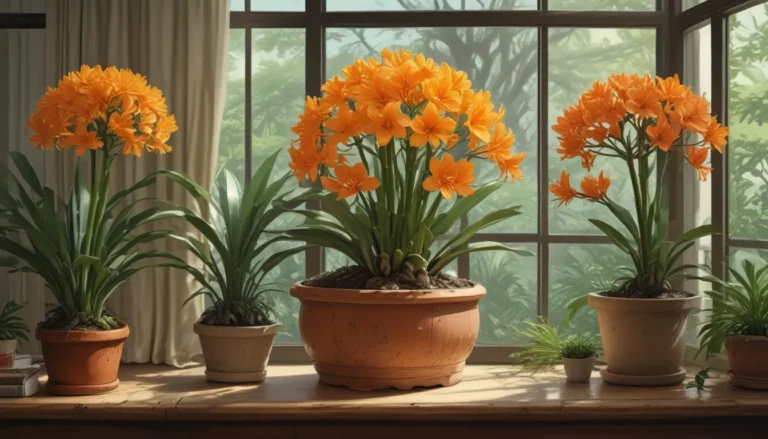Comprehensive Guide on How to Plant and Grow Serrano Peppers

If you’re a fan of spicy food and looking to up your pepper game, diving into the world of serrano peppers might be just what you need. These versatile peppers offer a perfect balance of heat and flavor, making them a staple in Mexican cuisine.
Introduction to Serrano Peppers
Serrano peppers, part of the Capsicum genus, pack a spicy punch with a Scoville heat range of 10,000 to 30,000 SHU. These chilies grow up to five feet tall, producing fruits that are one to four inches long with a grassy, spicy flavor.
Green serranos are commonly used, offering a kick of spiciness. If left to ripen, these peppers turn red, yellow, brown, or orange, providing a milder flavor. Their thick flesh makes them perfect for juicy dishes like salsa.
The Origin and Cultivation of Serrano Peppers
Hailing from Mexico, serrano peppers are named after the Spanish term for “from the mountains.” They are the second-most popular pepper in Mexico, following jalapenos. In the US, serrano sales are on the rise, as they offer a reliable source of spice compared to milder jalapenos.
While most gardeners grow serranos as annuals, they can be cultivated as perennials in warmer zones, providing a consistent source of spicy peppers year after year.
Propagation of Serrano Peppers
If you’re considering growing serrano peppers, it’s crucial to understand that peppers cross-pollinate easily. To ensure your desired cultivar, it’s best to purchase seeds or seedlings or isolate your plants from other pepper varieties.
Starting serrano peppers from seed is straightforward, requiring bright light, a heat mat, and a good seed-starting mix. Transplant the seedlings outside after hardening them off, ensuring they have at least 12 hours of light a day.
Cultivars and Growing Options
While serranos are commonly sold under a generic name, there are various cultivars available, offering unique characteristics. From tiny ‘Balin’ peppers to the high-yielding ‘NuMex CaJohns Serrano,’ there’s a cultivar to suit every gardener’s needs.
Whether you choose a classic serrano variety or experiment with hybrids like ‘Serrano del Sol’ or ‘Tampiqueno,’ you’re in for a flavorful gardening experience.
Comprehensive Growing Tips for Serrano Peppers
To ensure your serrano peppers thrive, follow these essential growing tips:
- Water regularly, ensuring moist but not wet soil.
- Mulch around plants to retain water and suppress weeds.
- Protect peppers from temperatures below 50°F.
Whether you’re a beginner gardener or a seasoned pro, implementing these tips can help you grow healthy and abundant serrano peppers in your garden.
Pest and Disease Management
While serrano peppers are generally more prone to pests than diseases, it’s essential to remain vigilant. Common pests like aphids, flea beetles, and spider mites can affect plant growth and fruit production.
Diseases like damping off, mosaic virus, and powdery mildew can also impact serrano peppers. Maintaining good garden hygiene and monitoring for signs of pests and diseases can help protect your plants and ensure a successful harvest.
Harvesting and Preserving Serrano Peppers
Harvesting serrano peppers at the right time can significantly impact their heat level and flavor. Peppers on the first node of the plant are milder, while those on the second node are spicier. Sorting peppers based on the node they came from can help cater to varying heat preferences.
Preserving serrano peppers can be done through drying, pickling, or making jelly. Whether you choose to air dry, use a dehydrator, or pickle your peppers, these preservation methods can help you enjoy serranos year-round.
Delicious Recipes and Cooking Ideas
From savory oatmeal to zesty salsa verde, serrano peppers can add a kick to your favorite dishes. Experiment with roasting, pickling, or incorporating serranos into traditional Mexican recipes for a flavorful culinary experience.
Whether you’re a spice enthusiast or looking to explore new flavors, serrano peppers offer endless possibilities in the kitchen. Embrace their heat and flavor to elevate your culinary creations.
Conclusion: Embrace Serrano Peppers in Your Garden
Serrano peppers are a versatile and flavorful addition to any garden. By following proper cultivation practices, managing pests and diseases, and exploring creative recipes, you can enjoy a bountiful harvest of spicy peppers year after year.
So don’t wait—plant some serrano peppers in your garden and elevate your culinary creations with their fiery flavor. Whether you’re a beginner gardener or seasoned pepper enthusiast, growing serranos is a rewarding experience that will spice up your meals and delight your taste buds.





